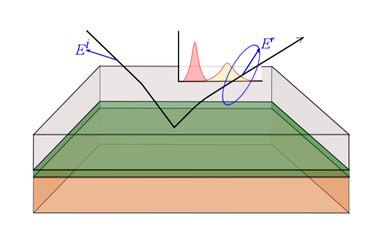|
Context of project
The two-dimensional electron gas (2DEG) is a physical concept that allows to model the behavior of electrons confined in two-dimensions, such as at interfaces and quantum wells. The controlled formation of 2DEGs in between high crystal-quality semiconductors and the consequent electron mobility enhancement allowed the development of various field effect transistor designs pushing forward the electronic industry. Additional, the electron confinement resulted in quantization of electronic states, and the emergence of new physical phenomena such as the fractional quantum Hall effect. The continuous development of growth techniques nowadays allow to grow high quality oxide heterostructures with the corresponding formation of novel 2DEG. The electronic structure of 2DEG in oxide interfaces is different from the most standard semiconductor counterparts. In most of the oxide interfaces, the transport properties are dominated by narrow d-band electrons, whereas in semiconductors the electrons localized at states at the bottom of the conduction band dictate the properties of the 2DEGs. Even more intriguing, is the recent evidence of 2DEG like-behavior at interfaces formed between amorphous oxides. Further studies and understanding of these novel 2DEG are necessary, however, the low crystalline quality of these interfaces drastically complicates the characterization by well-known techniques such as angle resolved photoemission spectroscopy (ARPES). In this project we take a different approach. In collaboration with researchers in Mexico (IICO-UASLP), we characterized the amorphous interfaces by angle resolved infrared ellipsometry and obtain information of the dielectric functions by independent theoretical models and knowledge of the underlying physics. With this methodology we are able to obtain valuable information of the conductivity of the 2DEGs and relativistic effects such as the presence of spin orbit coupling. 2DEG at complex oxide interfaces reference: [1] www.annualreviews.org/doi/abs/10.1146/annurev-matsci-070813-113552 Our work Based on infrared spectroscopic ellipsometry and theoretical modelling, we revealed the properties of a 2DEG formed between a metal and amorphous oxide, and elucidate the presence of spin orbit interaction due to the hybridization of interfacial states as previously suggested for amorphous perovskite oxides. This study proves the feasibility of our methodology for overcoming an experimental impediment which, for decades, has held back important advancements for the understanding of 2DEGs in amorphous materials. Read more: Two-dimensional electron gas in a metal/amorphous oxide interface with spin-orbit interaction J.M. Flores-Camacho, J. Puebla, F. Auvray, A. Lastras-Martínez, Y. Otani, R.E. Balderas-Navarro Physical Review B 100 (23), 235449 (2019) journals.aps.org/prb/abstract/10.1103/PhysRevB.100.235449 arXiv: arxiv.org/abs/1901.08671 Personal contribution: Project co-leader (corresponding author), proposed project, advice on sample properties and guidance on experiments and data analysis
0 Comments
Leave a Reply. |
Jorge PueblaResearch Scientist Archives
October 2020
Categories |

 RSS Feed
RSS Feed
